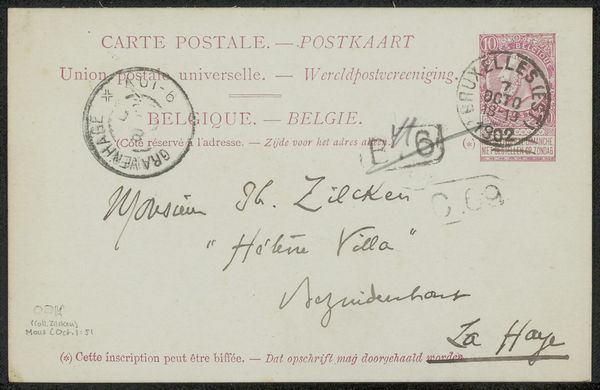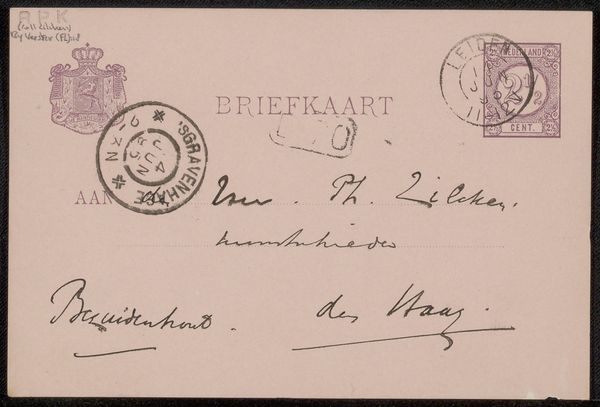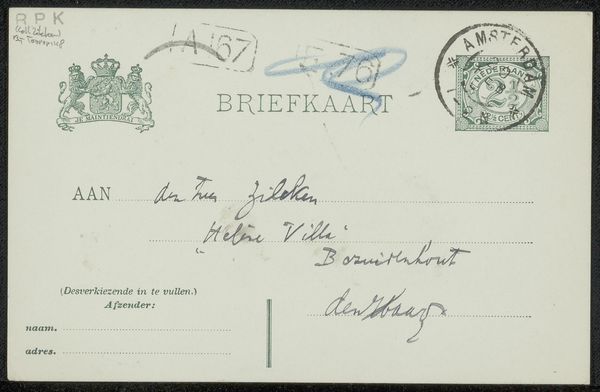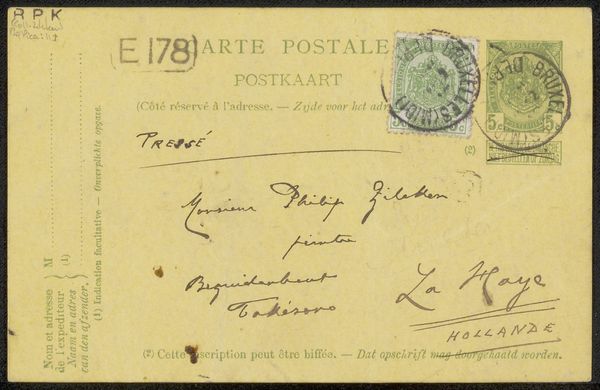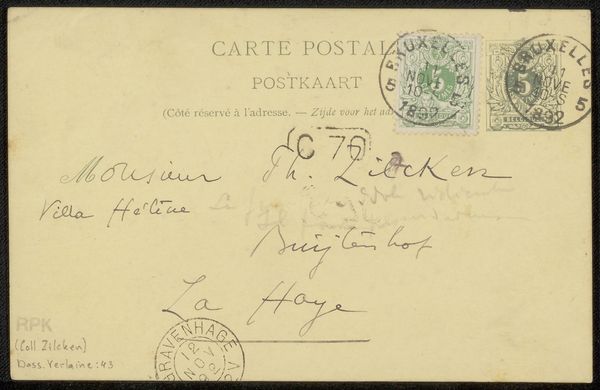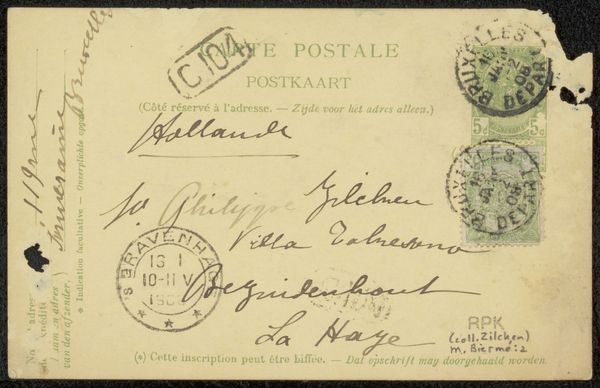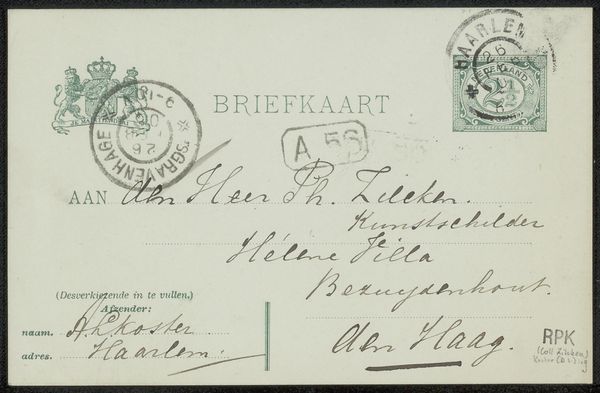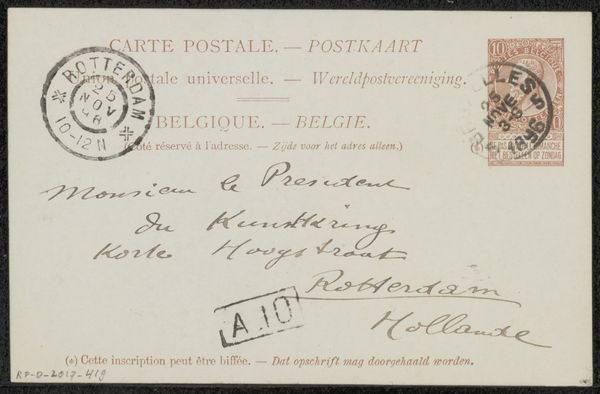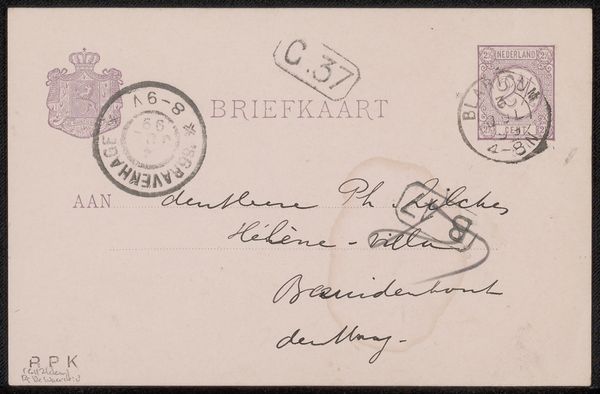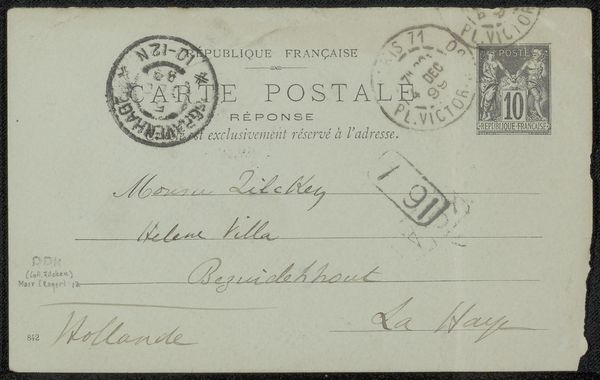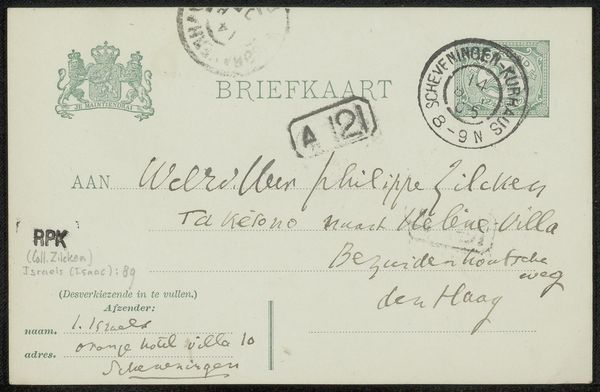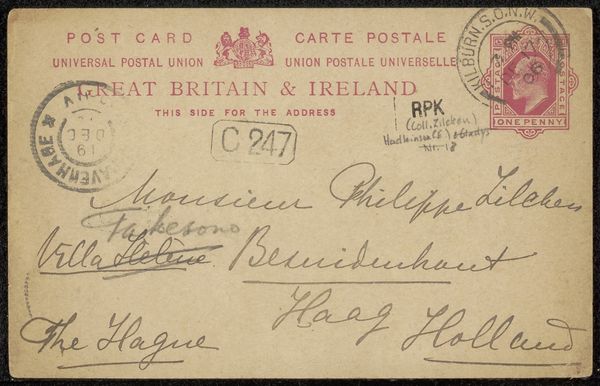
#
portrait
#
intimism
#
calligraphy
Copyright: Rijks Museum: Open Domain
Curator: Today we're examining a piece titled "Briefkaart aan Philip Zilcken," a postcard sent sometime between 1897 and 1899 to the artist Philip Zilcken, by Charles vicomte de Spoelberch de Lovenjoul. Editor: There’s an immediate intimacy to it—seeing someone's actual handwriting on a mundane object, the ephemerality of the everyday preserved. The faint stamp and handwriting give it such subtle colors and interesting patterns. Curator: Yes, this piece provides a glimpse into the art world through what appears to be a personal note, demonstrating that artistic communication occurred even on the most prosaic mediums of its day, influencing what was possible at the intersection of art and communications technology. Editor: Look how carefully the addresses are aligned, yet the ink blot near “La Haye” almost creates a secondary point of interest. I love the contrast between that almost forced orderliness and the natural, slight imperfections. The interplay evokes a peculiar balance, wouldn’t you say? Curator: Absolutely. And let’s consider Zilcken’s role within the Symbolist and Intimist circles, as the historical context provides valuable insights. Did this quick correspondence facilitate a gallery exhibition or contribute to a broader aesthetic dialogue within his peers? Such informal documentation of communication amongst leading European artistic influencers adds layers of richness to the socio-historical landscape. Editor: Indeed. I find the tension compelling: The stark formality of the pre-printed "Carte Postale," next to the intimate, handwritten inscription. Its design itself is an unintended but integral aspect of its composition and overall impact, like an exquisite mixed-media experiment from a more sentimental, less ironic era. Curator: Exactly. Preserved letters are such wonderful pieces in social collections such as this, hinting as they do at greater stories we only get a brief glance into. Editor: It certainly invites deeper pondering of the relationships it implies, doesn't it? A fragment that manages to evoke more than the sum of its modest formal qualities.
Comments
No comments
Be the first to comment and join the conversation on the ultimate creative platform.

